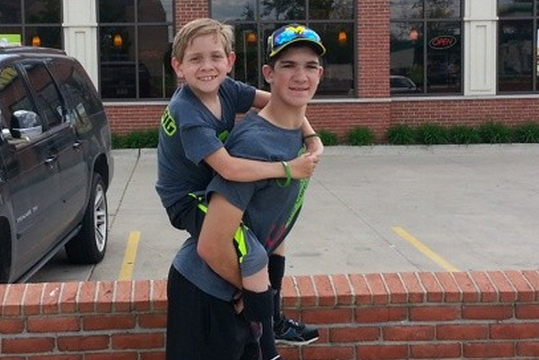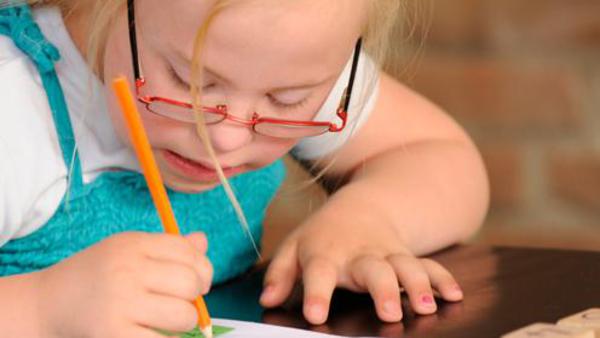Life doesn’t take a break. Things come up in our lives 24 hours a day, every day. Problems don’t wait until it’s convenient for us. That’s why Tikvah Layeled provides 24 hour support to caregivers and parents of children with cerebral palsy.
There are many facets to the disorder associated with CP. Some are not always evident and care for a child with CP can be challenging and confusing at times, but parents, and even caregivers, need to know they are not in it alone. They can draw upon the years of experience provided by the caregivers at Tikvah Layeled.
Parenting is difficult enough, but for parents of disabled children it can seem like there is nowhere else to turn. For the dedicated caregivers at Tikvah Layeled, they understand this. Advice, compassion, and a sympathetic ear, can go a long way in providing support in times of need. Caring for a child that is suffering can be a painful experience for any parent, but help is available around the clock, all year round.
When questions come up, whether they are related to therapy or to the specialized equipment that is used to assist children with CP, referrals, information and advice are all available. In addition to the many counseling sessions, therapy and fun activities Tikvah Layeled regularly provides children, sometimes a phone call is all it takes to answer questions or advise a parent who is feeling overwhelmed. Tikvah Layeled provides that support around the clock. Sometimes all we need is a word of encouragement.
















 Jewel Kats is a lot of things, disabled is just one of them. It’s what she does with her disability that is so inspiring. She takes it and turns it into a source of inspiration for others. Her web comics series, DitzAbled Princess, has steadily closed in on 200,000 hits since it launched in early 2013. In the strip, co-created with Katarina Andriopoulos, Jewel in comic character form, shares her observations about her life with readers, many of whom are disabled. Her audience, disabled or not, enjoys her quirky take on life’s many trials and tribulations and the comic team have amassed enough strips for a collection, DitzAbled Princess: A Comical Diary, published by by Marvelous Spirit Press.
Jewel Kats is a lot of things, disabled is just one of them. It’s what she does with her disability that is so inspiring. She takes it and turns it into a source of inspiration for others. Her web comics series, DitzAbled Princess, has steadily closed in on 200,000 hits since it launched in early 2013. In the strip, co-created with Katarina Andriopoulos, Jewel in comic character form, shares her observations about her life with readers, many of whom are disabled. Her audience, disabled or not, enjoys her quirky take on life’s many trials and tribulations and the comic team have amassed enough strips for a collection, DitzAbled Princess: A Comical Diary, published by by Marvelous Spirit Press.![16364681918_feb5286247_s[1]](http://www.tikvahlayeled.org/blog/wp-content/uploads/2015/04/16364681918_feb5286247_s1.jpg)
 For children born with cerebral palsy there are many challenges they will have to overcome. Physically, the child with CP may have difficulties with simple motor skills. The child may have trouble with speech, mobility, holding utensils — even feeding themselves may present obstacles for them on a daily basis. Cerebral palsy is a condition the develops either before or at birth and results from damage to the brain. While some mental impairment is not uncommon, many children are fully aware of their disability. They know that they are different from other children and this can become more pronounced as the child grows older and comes into contact with the outside world. It is important then that these children are made to feel accepted and loved by parents, teachers, caregivers and other children. This acceptance will better equip them for the challenges they have been presented with in life.
For children born with cerebral palsy there are many challenges they will have to overcome. Physically, the child with CP may have difficulties with simple motor skills. The child may have trouble with speech, mobility, holding utensils — even feeding themselves may present obstacles for them on a daily basis. Cerebral palsy is a condition the develops either before or at birth and results from damage to the brain. While some mental impairment is not uncommon, many children are fully aware of their disability. They know that they are different from other children and this can become more pronounced as the child grows older and comes into contact with the outside world. It is important then that these children are made to feel accepted and loved by parents, teachers, caregivers and other children. This acceptance will better equip them for the challenges they have been presented with in life.![dd868ae91168bc94950570ecece660ac[1]](http://www.tikvahlayeled.org/blog/wp-content/uploads/2015/04/dd868ae91168bc94950570ecece660ac1.jpeg)


![39acb967dbbb9959cd9b8a3ced4026ea[1]](http://www.tikvahlayeled.org/blog/wp-content/uploads/2015/04/39acb967dbbb9959cd9b8a3ced4026ea1.jpg)



![692f60d926cb9fd34fa06ea42768d44f[1]](http://www.tikvahlayeled.org/blog/wp-content/uploads/2015/02/692f60d926cb9fd34fa06ea42768d44f1.jpg)



